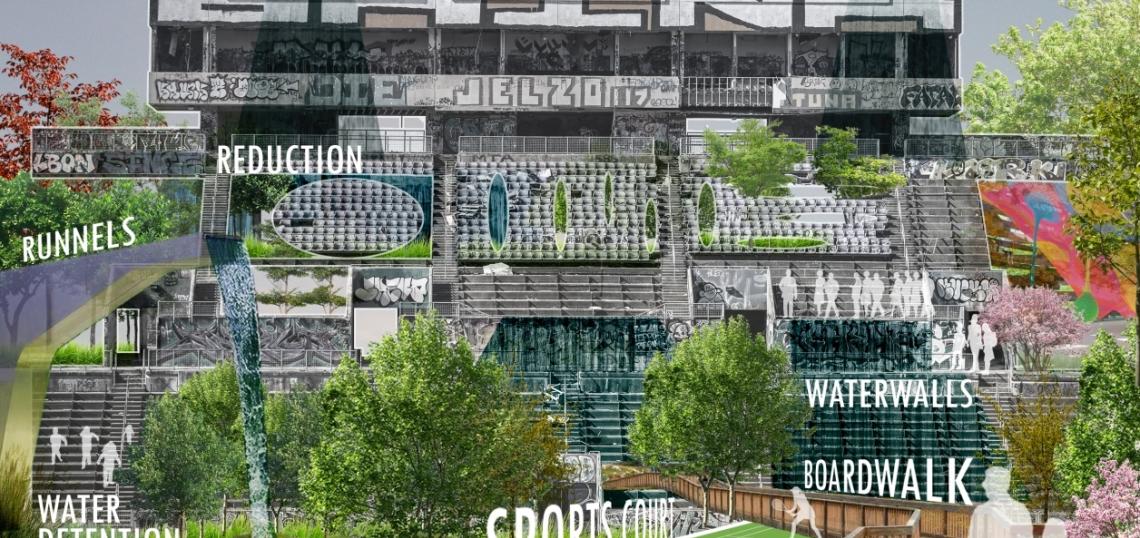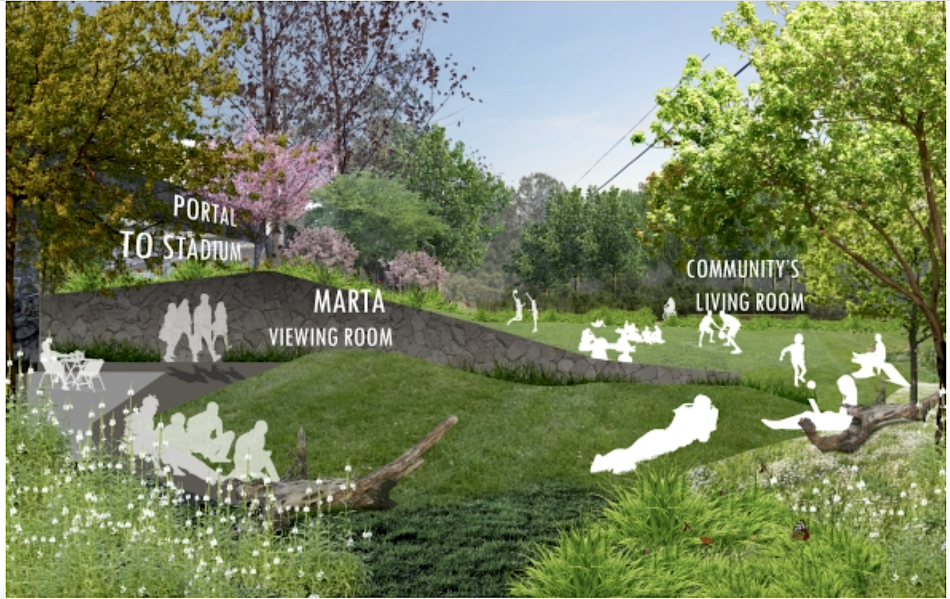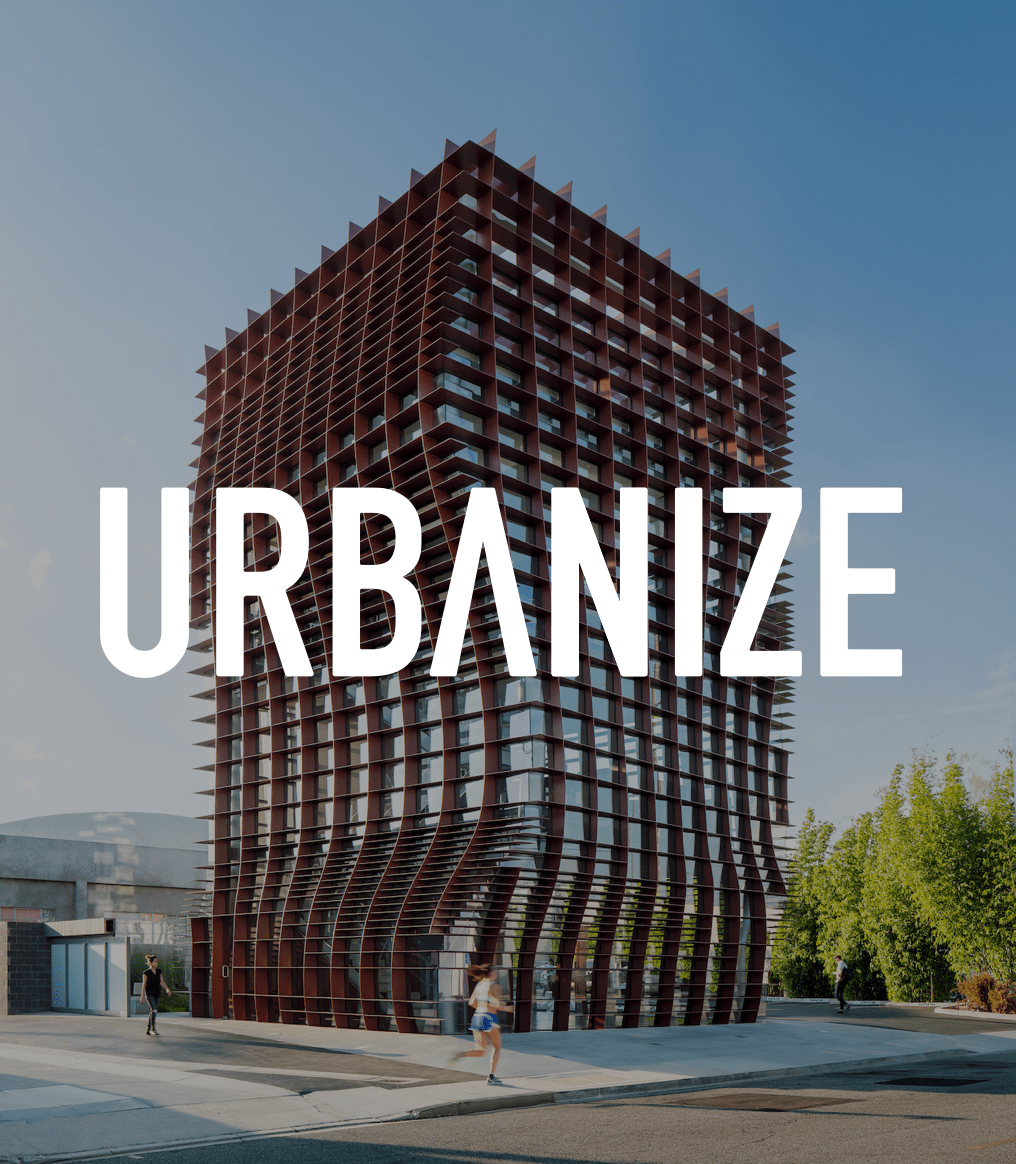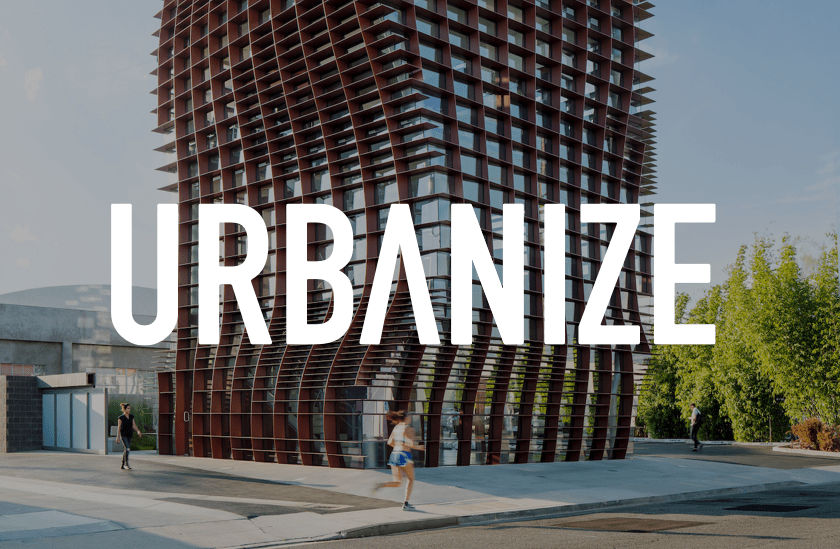Some of the brightest design minds at Georgia Tech have birthed ambitious, fantastical, and perhaps unrealistic ideas such as the MARTA Mountain concept at Krog Street Tunnel. But big ideas for Atlanta’s pockmarked urban fabric aren’t exclusively homegrown.
As part of a year-end show that recently concluded, students at the University of Pennsylvania’s Stuart Weitzman School of Design dreamed up inventive new uses for a historic Westside property that’s devolved into one of Atlanta’s largest vacant eyesores: circa-1948 Herndon Stadium, now abandoned for more than a decade.
The studio of graduating students at the private research university in Philadelphia homed in on growing Atlanta as “one of America’s complicated urban landscapes,” where modernity is consistently juxtaposed with important history dating back through the civil rights movement to the Civil War. The broader analysis focused on a four-mile-long transect of Atlanta stretching from Cabbagetown to the former Gulch, Herndon Stadium, and Washington Park.
“[Atlanta] is uniquely American and cosmopolitan—both emblematic of the South—and a national center of commerce with a lasting focal point in the American sociopolitical discourse,” wrote the studio participants, in summation.
Herndon Stadium in the analysis is reimagined as a green, urban oasis with both active (see: sports courts) and passive uses.
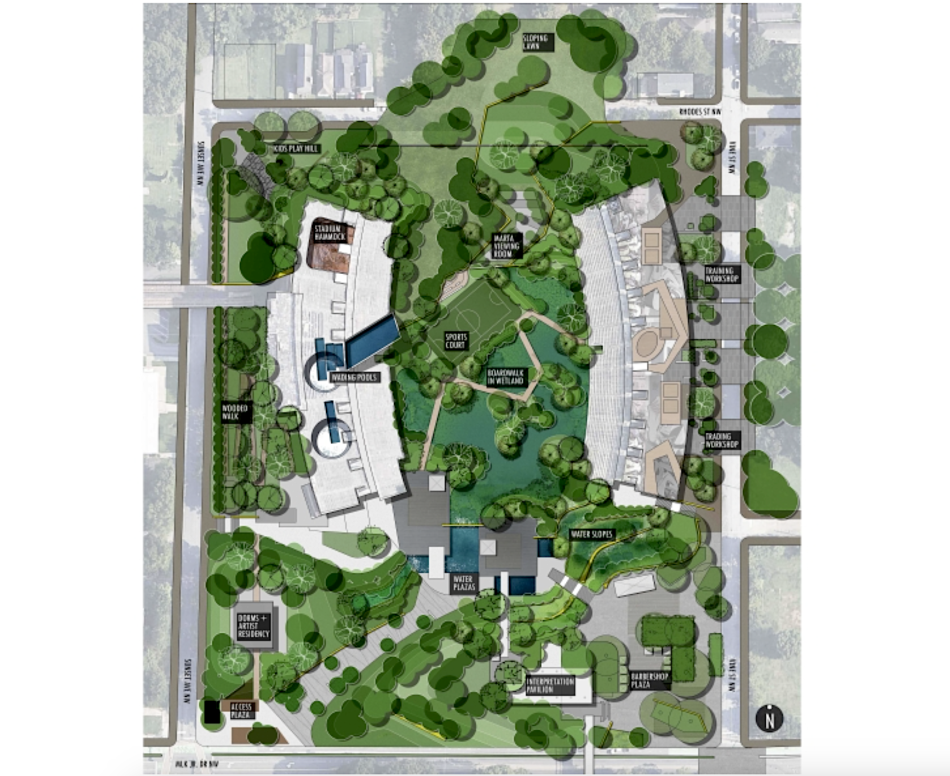 Overview of ideas hatched for the empty Westside stadium as part of the Weitzman School of Design studio exercise, with MLK Jr. Drive at bottom and Rhodes Street at top University of Pennsylvania, Stuart Weitzman School of Design/Kaustabh Banerjee
Overview of ideas hatched for the empty Westside stadium as part of the Weitzman School of Design studio exercise, with MLK Jr. Drive at bottom and Rhodes Street at top University of Pennsylvania, Stuart Weitzman School of Design/Kaustabh Banerjee
Specific aspects call for the graffiti-covered grounds to feature a kids play area, “stadium hammocks,” wading pools, a boardwalk with wetlands, a “MARTA viewing room” for watching trains pass underneath, plazas, waterfalls, lawns, an artist residency building, and workshops for job training.
Herndon Stadium was built in 1948 and remains the only double-sided stadium among the HBCUs of Atlanta University Center. The 15,000-seat venue was named for Alonzo Herndon—founder of Atlanta Life Insurance Company and the city’s first Black millionaire—and hosted many notable events during its nearly 70-year run.
Those included Olympic field hockey finals for the 1996 Centennial Olympic Games in Atlanta. A multitude of concerts, including one that became a live Ray Charles album. One of heavyweight boxing legend Joe Louis’ bouts. The home turf of professional women’s soccer team Atlanta Beat. And, according to Atlanta History Center, a filming location for the 2006 football flick, “We Are Marshall.”
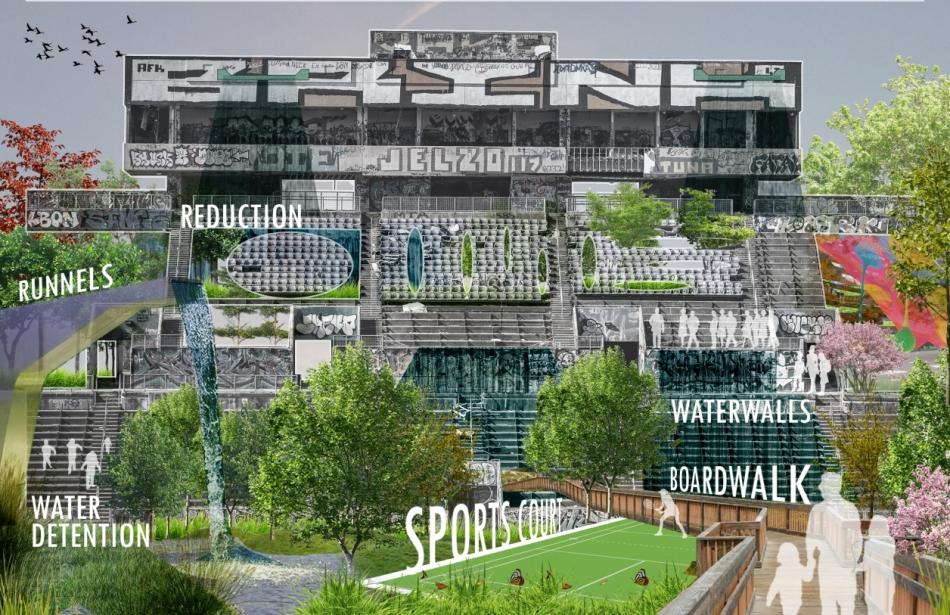 How the 1948 stadium could be infused with life, per the studio's concept. University of Pennsylvania, Stuart Weitzman School of Design/Kaustabh Banerjee
How the 1948 stadium could be infused with life, per the studio's concept. University of Pennsylvania, Stuart Weitzman School of Design/Kaustabh Banerjee
But 11 years after Morris Brown College sold the stadium to Clark Atlanta University, the historic grounds of Herndon Stadium remain vacant and crumbling. Atlanta City Council member Byron Amos, who represents Vine City, and FIFA officials spoke excitedly in 2023 about tentative plans to revive the stadium and open it in time for Atlanta’s month of 2026 FIFA World Cup matches next year. But those plans haven’t produced results.
Is converting the stadium to a public-accessible greenspace a bit farfetched, for a number of reasons (such as, we’re guessing, liability?) Perhaps. Could the conversion be more cost-effective and reverential than bulldozing it? Probably. Would it beat the alternative of letting the stadium rot? Absolutely.
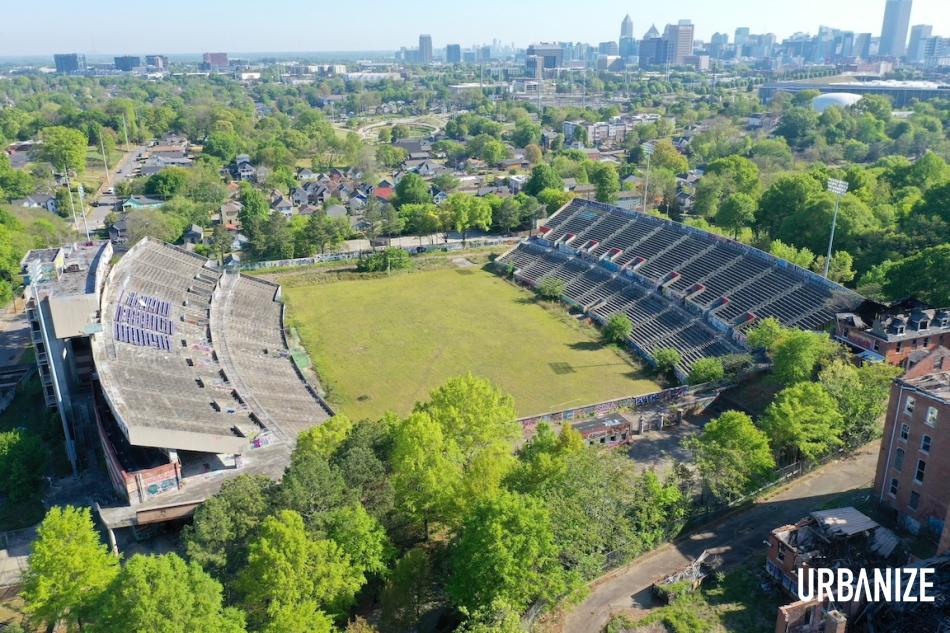 Looking north across the ghostly grounds today, toward English Avenue, Georgia Tech, and Buckhead beyond.
Looking north across the ghostly grounds today, toward English Avenue, Georgia Tech, and Buckhead beyond.
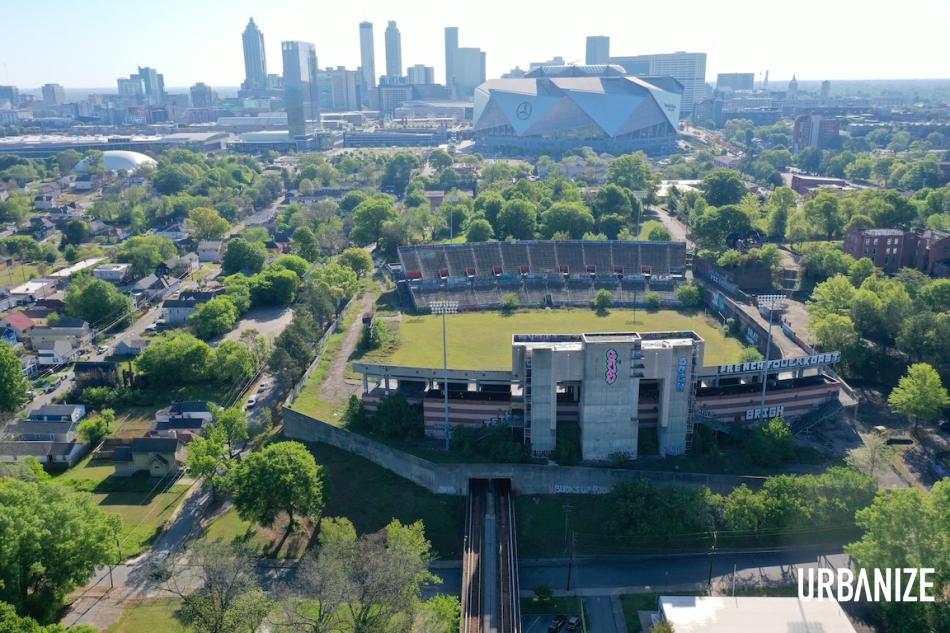 Juxtaposition of Herndon Stadium and Mercedes-Benz Stadium (middle distance), both situated along M.L.K. Jr. Drive west of downtown.
Juxtaposition of Herndon Stadium and Mercedes-Benz Stadium (middle distance), both situated along M.L.K. Jr. Drive west of downtown.
...
Follow us on social media:
Twitter / Facebook/and now: Instagram
• Vine City news, discussion (Urbanize Atlanta)




